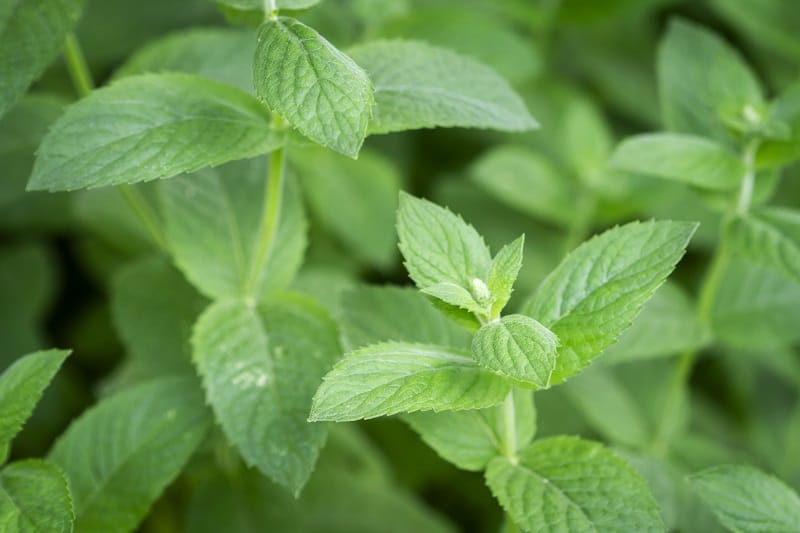
Mint plants are spreading perennial herbs that are usually planted in containers or confined beds. They provide aromatic flavor to food and tea, as well as offering many health benefits like aiding digestion and relieving headaches. These plants are bright green or variegated and are great garden accents but, like most plants, they are also prone to conditions that cause yellowing leaves.
Mint leaves turning yellow: What are the common causes?
1. Underwatering
Underwatering your mint plants could be detrimental to their health. Mint survives well in moist soil and can wilt if the soil dries out or during hot weather or droughts. These plants prefer to be watered regularly and planted in soil that retains moisture. They do not do well in sandy or stony soil, as it drains too quickly.
To save your underwatered mint plants, water them frequently to keep the soil moist. Adjust the frequency of watering according to the time of year and the climate. Water once every three days if you are in an area with a hot climate, and once a week if you are in a temperate climate.
Plant your mint plants in rich compost, as this is good at holding moisture but still has a porous structure so the water can drain out. Monitor the soil moisture by testing to a finger’s depth and adjusting watering frequency so the soil does not dry out and dehydrate the plants. Water the plants generously so that the roots can establish themselves properly. Light watering encourages shallow root growth which makes your mint plants more vulnerable to drought.
Mulch helps mint plants in garden borders to retain moisture, while compost, leaf mold and well-rotted manure are also good options to retain moisture, improve soil structure and reduce soil evaporation.
2. Root rot due to overwatering
Mint leaves turning yellow could also be due to root rot as a result of overwatering. The leaves may also droop. Root rot and other fungal diseases thrive in soil that is saturated with water that does not drain away. Mint plants prefer moist soil with a porous texture that allows excess water to drain away so the roots do not sit in boggy soil.
Root rot occurs because of slow-draining soil, such as compacted soil, and pots with no drainage holes. To fix the issue, scale back on the watering and transplant the mint to a well-draining area of your garden or to a pot with fast-draining soil and drainage holes.
3. Fungal diseases
Yellowing leaves could also be attributed to fungal diseases such as verticillium wilt, rust, and powdery mildew. Verticillium wilt is caused by Verticillium fungi and is a common fungal disease affecting mint plants.
Rust causes severe stunting and could even kill the mint plants. You will notice blisters at the bottom of the leaves; the leaves eventually turn yellow and may start to fall off.
To fix the rust problem, use a thermal method such as flame weeding. If the infection is severe, remove the mint plants and dispose of them. The healthy plants should be transplanted to new beds and monitored regularly for signs of infection. You could also burn the roots to kill the spores in the soil.
To treat verticillium wilt, fertilize on schedule and use a low-nitrogen, high-phosphorus fertilizer. Prune off dying branches and get rid of the fungus in the soil through solarization, which uses high temperatures to kill the fungus.
Powdery mildew is a powdery, grayish fungus growing underneath the leaves. The fungus turns the mint leaves yellow and could even kill them. To fix this problem, spray fungicide on the afflicted leaves and inoculate the soil with fungicide so the fungus does not resurface.
4. Poor potting conditions
Yellowing mint leaves could be due to poor potting conditions. Pots that are too small for the plants could lead to yellowing leaves and wilting as the soil dries quickly. A lack of drainage holes in pots could also contribute to the problem.
To fix this, plant or transfer your mint plants to larger pots that are at least 12 inches across so the soil will not dry out so quickly and you will be able to prevent wilting. Larger pots have greater soil capacity and more moisture. The roots will also have more room to access nutrients so that more foliage is produced. See to it that the pots have drainage holes so the soil does not become boggy.
Water the mint plants regularly to keep the soil moist, and the yellowing and wilted appearance should be resolved within a few days. Avoid using saucers or trays that catch the water and make the soil boggy.
5. Pest infestation
Insects like aphids could destroy your mint plants by sucking their sap or juice. The leaves begin to pucker and curl and eventually turn yellow. To fix the problem, use organic insecticides like neem oil or insecticidal soap.
Conclusion
Mint leaves turning yellow can be alarming for mint growers as this may indicate serious damage to the plants. This yellowing could be attributed to overwatering, underwatering, fungal diseases, pest infestation or poor potting conditions.
Image: istockphoto.com / Wylius